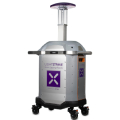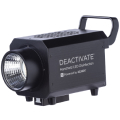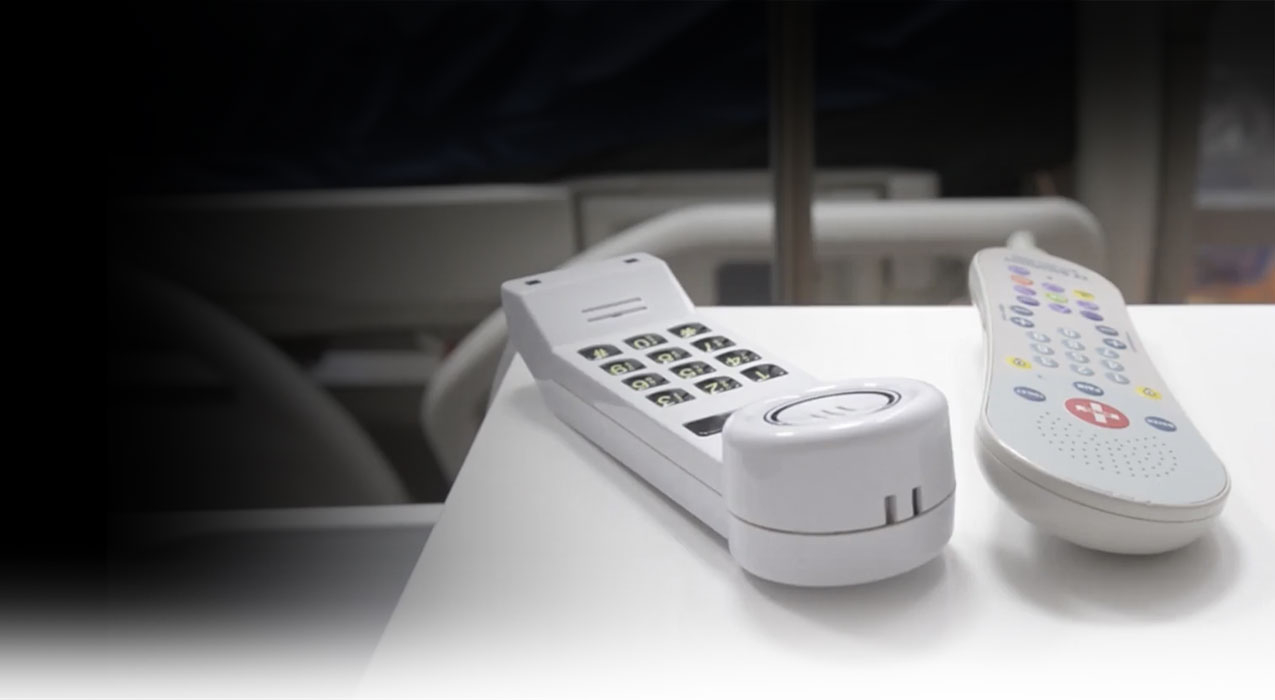We’ve all heard surfaces are a vehicle for the transmission of germs that can make us sick, but just how dirty are those surfaces, and which one ranks amongst the germiest?
Our cell phones pretty much top the chart… they can carry 10 times as many germs as a public bathroom’s toilet. If that’s not gross enough, think about the fact that the average person touches their face 23 times an hour. And we’re doing that after we touch our phones and many other germ-ridden surfaces.
In healthcare, many facilities have added ultraviolet light (UV) technology as a final step in their disinfection process to help reduce these germs that persist on surfaces. But, there’s a dirty secret…. A greater risk of pathogen transmission remains when using a one-cycle UV disinfection program versus a multiple position program1.
Companies selling UV light devices will recommend how a hospital should use its product. This is part of the Instructions for Use (IFU). The most common disinfection cycle recommendations you’ll see for a typical patient room are:
- A one-placement disinfection cycle using one Mercury UVC unit
- A single disinfection cycle with triple emitter Mercury UVC light towers
- 2-3 disinfection cycles using a Broad spectrum, Pulsed Xenon UV technology
It’s a given that we are all looking to get the best result in the least amount of time without cutting corners. What could you be missing with a one-cycle UV disinfection program?
In 2011, a study published in Infection Control & Hospital Epidemiology evaluated a single Mercury UVC light unit with a one-placement disinfection cycle. Basically – you position the device, turn it on and let it run. As appealing as this sounds, the results of this study were less than optimal. The one-placement UV disinfection cycle took an average of 67 minutes to complete and when surfaces were sampled after the cycle ran, 47% were still contaminated with pathogens1. The researchers decided to run a smaller subset with two disinfection cycles to see if the surface contamination decreased – and it did. Significantly.
This research further validated the science that UV light is a line-of-sight disinfection technology, that you must account for items in the room/area creating shadows where the light can’t reach, and unfortunately, some of the most common surfaces in hospital rooms are not good at reflecting light.
Here’s another thought. What about those frequently touched items like phone receivers, call buttons, blood pressure cuffs, and drawers? Those need to be opened, flipped, or turned over so the light can disinfect both sides. How can you achieve that with one cycle?
A good way to think about disinfecting with UV light is by using this rule of thumb “If it can’t be seen, it can’t be cleaned™”
Now, what about the three emitter Mercury UVC towers? Is three better than one? It does seem to address the line of sight issue but you still can’t disinfect both sides of high-touch surfaces with one disinfection cycle. In peer reviewed research, a sporicidal disinfection cycle lasted 45 minutes2 with the three emitter Mercury UVC towers. That cycle time is pretty consistent with the single unit Mercury UVC product (52 min), most likely because they are using a similar bulb to generate UVC light.
When you review the published research on disinfecting with UV light and combine that with the expertise of epidemiologists who specialize in environmental contamination, single cycle disinfection is a vulnerability. That’s why Xenex’s best practice is to run two positions with our broad spectrum pulsed xenon technology on either side of a patient bed and to flip over high-touch items between cycles to ensure adequate UV light coverage. If there’s a bathroom, run a cycle in there as well.
The broad spectrum, pulsed xenon light from LightStrike has a proven 5 minute sporicidal cycle3 which is 10 times faster than the typical Mercury UVC product’s sporicidal cycle time. It is supported by more than 45 peer reviewed studies resulting in significant pathogen reductions. It’s fast, it’s effective, and doesn’t leave disinfection to chance.
Citations:
- Boyce JM et al 2011; 32(8): 737-42., 2) Liscynesky, C et al., 3)Ghantoji 2015, Kitagawa 2020

















